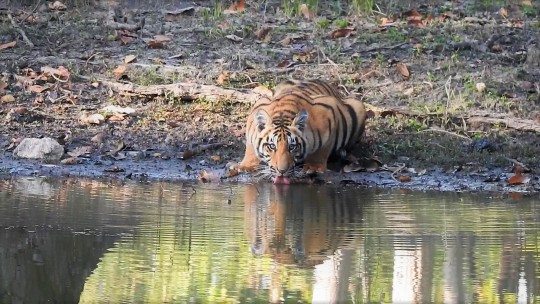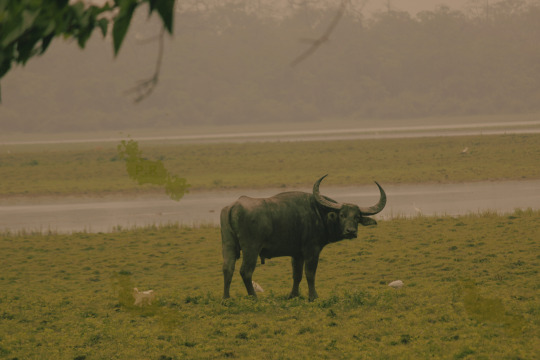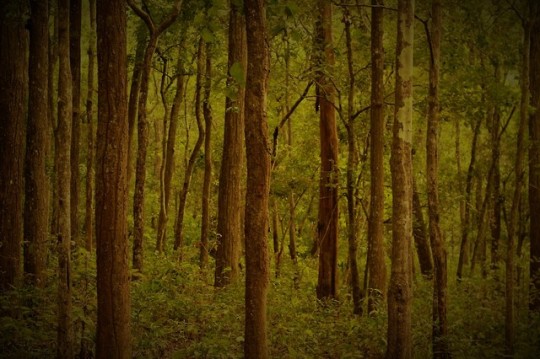#pradeepnaturalist
Video
youtube
The Dudhwa Tiger Reserve in India has been the focus of several conservation efforts aimed at protecting its biodiversity and the iconic Bengal tiger, along with other endangered species. Some of the key conservation efforts in Dudhwa Tiger Reserve include
Tiger Conservation: Dudhwa is primarily known for its Bengal tiger population. Conservation efforts focus on monitoring tiger populations, preventing poaching, habitat restoration, and reducing human-tiger conflicts.
Habitat Restoration: The reserve authorities work on habitat restoration programs aimed at maintaining and enhancing the natural habitats of various species, including tigers, rhinoceroses, and elephants.
Anti-Poaching Measures: Strict anti-poaching measures are implemented to combat illegal hunting and trade of wildlife. This includes patrolling by forest guards, using modern technology like camera traps and drones for surveillance, and involving local communities in wildlife protection efforts.
Community Participation: Involving local communities in conservation efforts is crucial for the long-term success of any conservation program. Community-based initiatives such as eco-tourism, sustainable livelihood projects, and awareness campaigns help build support for conservation and reduce human-wildlife conflicts.
Research and Monitoring: Continuous research and monitoring programs are conducted to assess the health of ecosystems, track population trends of key species, and understand the impact of conservation interventions.
Translocation and Reintroduction: In some cases, species are translocated or reintroduced into the reserve to bolster populations or restore ecological balance. This is done with careful planning and monitoring to ensure the success of such initiatives.
International Collaboration: Dudhwa Tiger Reserve also collaborates with international conservation organizations and wildlife experts to exchange knowledge, best practices, and financial support for conservation projects.
Overall, a multi-faceted approach combining law enforcement, habitat conservation, community engagement, and research is essential for the sustainable conservation of Dudhwa Tiger Reserve and its rich biodiversity.
0 notes
Text

Did you know? Assam co-operative jute mill was registered in 1959 under the Assam co-operative societies Act. Only mill in country in co-operative sector.
.
.
.
.
.
.
.
0 notes
Photo


Reunion of great souls. On the confluence of Three Rivers Ganga,yamuna, Saraswati. A rare occasion .
0 notes
Video
youtube
Dhudhua Tiger Reserve: Exploring the Heart of Wilderness.
Nestled amidst the lush landscapes of India lies a haven of biodiversity and natural splendor – the Dhudhua Tiger Reserve. Home to an incredible array of flora and fauna, this sanctuary beckons adventurers and nature enthusiasts alike to immerse themselves in its untamed beauty. Join us as we embark on a virtual journey to uncover the wonders of this captivating wilderness.
A Sanctuary of Diversity
Spread across the eastern fringes of India, the Dhudhua Tiger Reserve spans over vast swathes of dense forests, grasslands, and wetlands. Its diverse terrain harbors a rich tapestry of life, from elusive tigers and majestic elephants to vibrant bird species and endemic flora. As you traverse through its verdant trails, every corner reveals a new marvel of nature waiting to be discovered.
Wildlife Encounters
At the heart of Dhudhua lies its most iconic residents – the Royal Bengal Tigers. Revered as the symbol of strength and grace, these magnificent predators roam freely within the reserve, their golden coats blending seamlessly with the dappled sunlight filtering through the trees. Yet, the tiger is just one part of Dhudhua's vibrant ecosystem. Keep your eyes peeled for leopards, sloth bears, Indian gaur, and a myriad of other wildlife species that call this sanctuary home.
Birdwatcher's Paradise
For avian enthusiasts, Dhudhua offers a paradise of feathered wonders. With over 300 species of birds recorded within its boundaries, the reserve is a hotspot for birdwatching enthusiasts. From the regal Indian peafowl to the elusive Malabar pied hornbill, each sighting is a testament to the region's biodiversity and ecological significance. Don't forget to pack your binoculars and camera to capture these fleeting moments of avian beauty.
Conservation Efforts
While Dhudhua's natural splendor is undoubtedly awe-inspiring, it is also a fragile ecosystem in need of protection. Conservation efforts within the reserve focus on preserving habitat integrity, mitigating human-wildlife conflict, and promoting sustainable tourism practices. Through community engagement and scientific research, stakeholders strive to ensure the long-term viability of Dhudhua's biodiversity while fostering harmony between humans and wildlife.
Embracing the Wilderness
Whether you're a seasoned adventurer or a curious traveler, a visit to Dhudhua Tiger Reserve is an opportunity to reconnect with nature in its purest form. Lose yourself in the symphony of the jungle, where the rustle of leaves and the call of the wild become your companions. As you navigate its trails and waterways, let the serenity of Dhudhua envelop you, leaving behind the hustle and bustle of everyday life.
In conclusion, Dhudhua Tiger Reserve stands as a testament to India's natural heritage – a sanctuary where wilderness thrives and biodiversity flourishes. Through our collective efforts, may we continue to safeguard and cherish this invaluable treasure for generations to come. So, pack your sense of adventure and embark on a journey into the heart of Dhudhua, where every moment is a celebration of nature's boundless wonders.
.
.
.
.
.
.
.
.
.
..
0 notes
Text
INDIA
#pradeepnaturalist #incredibleindiaofficial
youtube
0 notes
Video
youtube
**
Gujarat: A Photo Journey Through Vibrant Landscapes
**
Nestled in the western reaches of India, Gujarat is a treasure trove of diverse landscapes, rich culture, and vibrant traditions. From the arid expanses of the Rann of Kutch to the bustling streets of Ahmedabad, every corner of this state beckons with unique photographic opportunities. Join me on a visual exploration of Gujarat as we traverse through its captivating vistas and immerse ourselves in its kaleidoscopic tapestry of sights and sounds. Ahmedabad: Where Tradition Meets ModernityOur journey begins in Ahmedabad, Gujarat’s largest city and a melting pot of cultures. As the sun rises over the cityscape, we venture into the labyrinthine lanes of the old city, where ancient mosques and intricately carved havelis stand as testaments to its rich heritage. Amidst the hustle and bustle of the Manek Chowk market, we capture the vibrant hues of spices, textiles, and street vendors, each frame telling a story of resilience and resilience. But Ahmedabad is not just a city steeped in history; it is also a thriving hub of contemporary art and architecture. We marvel at the sleek lines of the Sabarmati Riverfront, where modern skyscrapers stand in stark contrast to the tranquil waters below. In the shadow of the iconic Sabarmati Ashram, we witness the timeless simplicity of Gandhian philosophy, a poignant reminder of the power of non-violence in a turbulent world. The Enchanting Rann of Kutch Leaving the urban sprawl behind, we embark on a journey to the mystical Rann of Kutch, a vast salt marsh that stretches as far as the eye can see. Here, amidst the blinding white expanse, we encounter a landscape like no other – a surreal dreamscape where earth meets sky in an endless horizon. As the sun dips below the horizon, casting an ethereal glow over the salt flats, we capture the fleeting beauty of twilight in all its splendor. But the Rann of Kutch is not just about its otherworldly landscapes; it is also home to a rich tapestry of indigenous cultures and traditions. We immerse ourselves in the vibrant festivities of the Rann Utsav, where folk music and dance echo through the desert night. Amidst the colorful tents and bustling bazaars, we document the timeless rituals of the local communities, each frame a testament to the resilience of the human spirit in the face of adversity. Gujarat: A Land of Contrasts As our journey through Gujarat draws to a close, we reflect on the myriad contrasts that define this enigmatic land – the juxtaposition of ancient and modern, tradition and innovation, simplicity and complexity. In every frame, we find a glimpse of the soul of Gujarat, a land where diversity is celebrated, and resilience is a way of life. So, as we bid farewell to this captivating corner of India, let us carry with us the memories captured through our lenses – a testament to the timeless beauty of Gujarat and the indomitable spirit of its people.
0 notes
Text
Finally we are on a right track.
Good luck world!
0 notes
Photo

Subspecies : There are many Races of tiger living on earth and Roaming free in there natural habitats. But Many have become extinct.
Javan tiger - Found in Java, last sighted in 1972
Sumatran Tiger - Found in Sumatra.
Indo- chinese tiger - Found in South China and other South- east Asian countries
Chinese tiger - found in China.
Siberian or Amur tiger - found in the Siberian region in Russia.
Caspian tiger - found in and around the Caspian Sea in and around Afghanistan, Iran, China, and Russian Turkestan, and Turkey. It became extinct in the 1970s.
Balinese tiger - found in Bali. It became extinct in 1940
Royal Bengal Tiger - found in the Indian sub-continent. In India, the estimated wild population at the end of 19th century was 40,000.
A short description It is the most magnificent of all the cats. The Siberian tiger is the largest member of entire family. The Bengal Tiger is slightly smaller and the Sumatran is the smallest.
It was common practice that tigers bagged in royal hunts were measured using 11 inch to a foot tapes, specially made for this purpose
There is even a tiger skin 18 feet long.
A male tiger weighs 180-200 kg and a female about 135 kg or more. The Siberian tiger male weighed 320 and 384 kg and female 180 kg as per Stroganov.
The length of a tiger has been a subject of controversy for a long time. Hunters often stretched the skin to give false measurements. A well - stretched skin may measure up to 3 feet longer than the actual length of the animal.
The Royal Bengal tiger has a rich reddish yellow to orange rufous coat, marked with black stripes. The tail is black ringed. The ventral surface is white. The tiger in northern areas, like Russia and the northern China, are usually lighter in color than tigers in southern areas, like Malaysia and Sumatra.
The coat is thick and shaggy in cold climates. The coat is short and dense in warmer climates.
It skin is bright and shiny when it is in its prime. One hardly get a tick on it. In older animals the hair becomes short, rough and at times infested with ticks.
6 notes
·
View notes
Photo

The end of illegal wild life trade.
With the pandemic, we are hoping that this is the end of global illegal wild life trade, as many animals species has gone extinct and many more are on the verge of extinction, we are hoping that it will end after this sudden outbreak of corona virus.
we would have never imagined our commonest birds and also perhaps, the most abhorred bird would disappear so suddenly, but this exactly what has happened bringing about unprecedented problems in its wake and posing new questions, carcasses of dead animals let strewn across the countryside as there are no vultures to feed on those carcasses.
similarly corona has created a new threat to human kind much serious and deadly for humans this time, we need to think and re think, How are we going to be a multi planetary species?
3 notes
·
View notes
Photo

What a day we had ! We never had imagined we will see Pratincole, little tern, black bellied tern, great thick knee, purple heron, striated heron, pond heron infact after watching the heron in picture, i had this story in my mind.
A heron ate what fish he could
the bad, indifferent, and good.
His greed was never satisfied
Till, strangled by a crab, he died
1 note
·
View note
Photo

Drive through the one of the most dramatic tiger reserves in India, as we drove through the dense sal( a tree) dotted forest we reached in an open space or grassland, as we were looking for birds like shrike, bush chats, rollers etc
we herd some alarm calls and saw these beautiful creatures resting under the shade of a tree. One of the cub came to sip some water.
1 note
·
View note
Video
The adventure in Himalayas
As after having a dark cold and unforgettable night in gangi ( a village in Himalayas) we descended down on these broken and offload tracks filled with ice very slippery, we had few encounters with shepherds and their livestock, It was a place far from the routine and common human emotions.
..
..
.
.
.
.
.
.
.
.
.
1 note
·
View note
Text
Naturalist In India

One of the rarest of bovine in India is water buffalo. It resemble the cape buffalo and almost have the similar behavioral traits. It has large hoofed feet which prevent the sinking of the animal. Less than 4000 animals left in the wild.
Best place to see this animal in the wild is kaziranga national park in Assam where it share its habitat with Tiger, leopard, hog deer, Indian one horned rhinoceros, Asiatic elephant etc and number of Resident and migratory birds.
2 notes
·
View notes
Text
Trees in India

With lot of annual leaf litter trees in Himalayas created an alkaline humus that could retain a lot of water, in addition air in these dense Himalayan forest gradually becomes moist, because the leaves of growing trees calmed the air by reducing the speed of the wind blowing through the trunks of the tree, calmer air meant less water evaporation. More water allowed the trees to prosper, and one day they grow up over the tops of the forest canopy
1 note
·
View note
Photo

In forest calmer air meant less water evaporation. More water allowed the trees to prosper, and one day they grow taller and thicker over the top of the forest.
In the meantime , the forest floor and the micro climate is very much favorable for seeds to germinate.
This transformation is very fertile for all the living creatures in the forest, this transformation is a good example what trees can do to change their environment. As foresters like to say the forest creates its own ideal habitat.
1 note
·
View note
Photo

The winter is so bitterly cold that the tree would have frost bite long before it was over. In such conditions , its the spruce that prevails.
1 note
·
View note